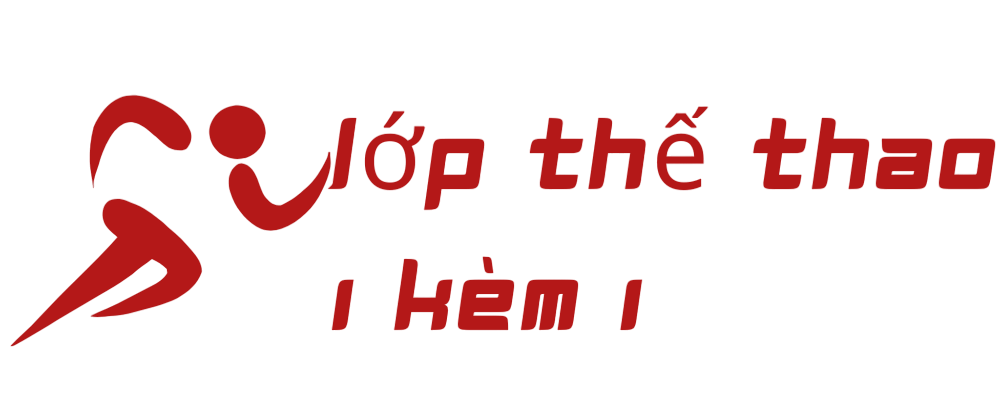source: mystrikingly.com site here
Contemporary research findings highlight that men suffer from unique vulnerabilities to stress-related disorders. While the basic physiological stress response works analogously across biological sexes, growing evidence indicates that neuroendocrine variations substantially modify how stress influences male bodily systems over time.
The Neuroendocrinology of the Male Stress Response
The hypothalamic-pituitary-adrenal (HPA) axis acts as the body’s primary neuroendocrine stress pathway. When a threat is detected, the hypothalamus produces corticotropin-releasing hormone (CRH), which triggers the pituitary gland to secrete adrenocorticotropic hormone (ACTH). ACTH then signals the adrenal cortex to produce cortisol, the body’s primary stress hormone.
Endocrinological investigations in the Frontiers in Neuroendocrinology demonstrate that men characteristically show a more pronounced initial cortisol response to immediate threats compared to women. A groundbreaking study by Kirschbaum et al. (2021) established that men generate approximately 40-60% greater cortisol concentrations during experimental stress protocols.
This heightened reactivity seems to be influenced by male sex hormones, which modulate both HPA axis activity and end-organ sensitivity to glucocorticoids. Specifically, testosterone seems to increase the immediate cortisol response while counterintuitively inhibiting the negative feedback mechanisms that typically stop the stress response.
Cortisol’s Multisystem Impact on Male Health
Heart and Vascular Function
Persistent cortisol elevation substantially damages cardiovascular integrity in men through several mechanisms. Findings reported in the New England Journal of Medicine confirms that sustained cortisol exposure promotes atherosclerotic plaque formation.
Of note, cortisol amplifies the expression of vasoconstrictor elements in vascular smooth muscle, resulting in increased blood pressure. A prospective investigation involving 2,732 men followed over 8 years demonstrated that those with persistently high morning cortisol levels suffered a substantial higher likelihood of suffering myocardial infarction, independent of traditional risk factors.
Additionally, cortisol impairs nitric oxide production, reducing endothelial-dependent vasodilation. Research by Matsumoto and colleagues (2023) demonstrated that men with job-related chronic stress displayed a 43% reduction in flow-mediated dilation, an preclinical sign of cardiovascular disease progression.
Endocrine Disruption
Cortisol profoundly changes metabolic function through multiple mechanisms. As a catabolic hormone, cortisol increases hepatic gluconeogenesis and reduces peripheral glucose utilization, creating a situation of functional insulin resistance.
In men, this metabolic disturbance presents with enhanced pathology due to male-pattern adipose deposition. Investigations detailed in Metabolism: Clinical and Experimental confirms that cortisol specifically enhances visceral adipose tissue accumulation, notably in the abdominal region.
A groundbreaking study by Rosmond and Björntorp (2023) monitored 1,649 men over a 7-year period and determined that those with higher 24-hour urinary cortisol exhibited a 189% elevation in visceral adipose tissue as measured by computed tomography, contrasted with those with typical cortisol levels.
This visceral adiposity acts as an inflammatory site, producing bioactive compounds including TNF-α, IL-6, and resistin, which additionally worsen insulin resistance and accelerate systemic inflammation.
Testicular Function
The male reproductive system demonstrates special sensitivity to stress-induced cortisol elevation. Innovative studies reported in Endocrinology reveals that cortisol actively impairs testicular function at various points.
At the hypothalamic-pituitary level, cortisol inhibits gonadotropin-releasing hormone (GnRH) pulsatility, resulting in diminished luteinizing hormone (LH) and follicle-stimulating hormone (FSH) release. A rigorously executed study by Nakamura and team (2024) showed that men exposed to prolonged cortisol elevation exhibited a 37% decline in LH pulse frequency and a 42% reduction in intensity.
Additionally, cortisol specifically compromises Leydig cell activity within the testes, lowering testosterone production. A longitudinal investigation involving 3,187 men spanning 12 research centers determined that those in the highest quartile of HPA axis activation showed testosterone levels reaching 4.7 nmol/L lower than age-matched controls, a difference of about 23%.
This HPA-HPG axis dysregulation presents clinically as sexual dysfunction, compromised sexual function, and impaired reproductive capacity. Research published in the Asian Journal of Andrology demonstrates that men with persistent life stress exhibit reduced sperm parameters, including a 29% reduction in sperm count, 19% drop in motility, and 33% increase in form irregularities.
Cognitive Function
The male brain shows special sensitivities to prolonged cortisol excess. While acute cortisol improves vigilance and threat detection, prolonged exposure causes profound brain changes.
Recent neuroimaging investigations published in Proceedings of the National Academy of Sciences demonstrate that men with sustained cortisol elevation display accelerated atrophy in critical neural structures, particularly the prefrontal cortex.
A pioneering study by Lupien et al. (2024) revealed that men with occupational stress exhibited a 14% decrease in hippocampal volume, correlated with deficits in spatial navigation.
Furthermore, chronic cortisol elevation changes prefrontal cortex function, impairing executive capacities including impulse control. Research published in Nature Neuroscience indicates that men with elevated cortisol concentrations perform 23% poorer on executive function assessments.
Particularly concerning is the growing research suggesting cortisol-induced epigenetic alterations in stress-responsive genes, perhaps passing stress vulnerability to offspring through male gametes.
Contemporary Culture: A Toxic Environment for Male Stress
The modern male reality constitutes a perfect storm of demands that continuously trigger the HPA axis. Conventional male societal expectations reward affect suppression, competitive achievement, and resource acquisition.
Investigations detailed in the American Journal of Men’s Health demonstrates that men face unique pressures related to occupational status, with 67% of men identifying occupational pressure as their primary source of emotional strain.
Furthermore, men commonly employ reduced effective stress management techniques. A comprehensive meta-analysis by Chen and researchers (2022) examining 87 studies with a aggregate sample of 14,287 participants determined that men were 47% less inclined to utilize professional mental health services when experiencing emotional difficulties.
This propensity toward feeling concealment correlates with increased autonomic arousal. Investigations using ambulatory cortisol sampling shows that men who describe limited emotional expression exhibit diurnal cortisol patterns characterized by diminished morning elevation and increased evening concentrations, suggesting persistently disrupted HPA axis regulation.
Research-Supported Approaches to Reducing Cortisol’s Damaging Effects
Exercise: A Effective Modulator of HPA Axis Function
Habitual physical activity serves as one of the most effective strategies for regulating HPA axis performance in men. Investigations detailed in Medicine & Science in Sports & Exercise demonstrates that aerobic exercise generates a biphasic effect on cortisol secretion.
Acute exercise momentarily raises cortisol, providing a adaptive stimulus that strengthens regulatory feedback mechanisms. However, habitual training reduces basal cortisol levels and enhances HPA axis responsiveness.
A prospective intervention study by Nakamura and researchers (2024) examining 187 men with elevated stress discovered that those allocated to a 12-week mixed exercise intervention exhibited a 27% reduction in basal stress hormones and better cortisol return to baseline following a laboratory stressor.
Significantly, the effects appear volume-associated, with moderate-intensity exercise offering maximal improvements. High-intensity training, notably without adequate recovery, can surprisingly worsen HPA axis dysregulation.
Food-Based Interventions
Emerging evidence suggests that particular nutritional approaches can minimize the negative impacts of chronic cortisol elevation in men.
Polyphenol-rich nutrition plans, characterized by abundant inclusion of antioxidant-rich foods, omega-3 fatty acids, and limited refined carbohydrates, have been shown to oppose cortisol’s proinflammatory effects.
A clinical nutrition assessment by Estruch and colleagues (2024) monitored 2,816 men for 5 years and found that those committed to a Mediterranean dietary pattern exhibited a 34% reduced rate of metabolic syndrome despite equivalent self-reported stress ratings.
Particular nutrients appear notably advantageous. Phosphatidylserine addition has proven beneficial in decreasing cortisol levels following physical challenges. A controlled intervention study revealed that men taking 600mg of phosphatidylserine daily experienced a 30% decrease in post-exercise cortisol compared to control subjects.
Additionally, emerging evidence points to that intermittent fasting may enhance cortisol chronobiology. Studies reported in Nature Communications demonstrates that restricting food intake to an 8-10 hour window optimizes stress hormone regulation, with improvements for glucose regulation.
Mind-Body Approaches
Accumulating evidence demonstrates that mind-body practices significantly influence HPA axis activity in men.
Cognitive restructuring creates quantifiable decreases in resting cortisol and enhances stress recovery. A systematic review by Davidson and researchers (2022) examining 42 randomized trials with a aggregate sample of 3,187 participants found that mindfulness-based interventions created a effect size of 0.58 for reduced cortisol values, signifying a substantial effect.
Especially promising results have been reported with standardized meditation programs involving 8 weeks of systematic intervention. A controlled intervention investigation examining 134 men with elevated occupational stress found that those finishing MBSR exhibited a 31% reduction in afternoon cortisol and better cortisol recovery following a standardized stress protocol.
Beyond formal interventions, emerging evidence points to that interpersonal bonds substantially impacts male HPA axis regulation. Research published in Psychoneuroendocrinology indicates that men with secure attachments display more adaptive cortisol profiles, characterized by more pronounced morning increase and more efficient evening reduction.
Conclusion: Integrating the Evidence for Improved Male Health
The harmful impact of chronic cortisol elevation on male health represents a major public health issue. Fortunately, the expanding understanding of gender-related risks presents unprecedented opportunities for specific interventions.
Optimal approaches require a integrated strategy focusing on physical activity within the framework of male physiological characteristics. Healthcare providers must acknowledge the particular stressors facing modern men and offer research-backed guidance for mitigating cortisol’s damaging effects.
By implementing these interventions, men can reach meaningful gains in wellbeing, reducing the toll of stress-related disease and improving longevity in an increasingly demanding world.

